Nicholas of Flüe
also: Niklaus, Brother Klaus
also: von der Flüe, de Rupe
 Catholic Memorial Day: 21 March
Catholic Memorial Day: 21 March
Non-obligatory Memorial Day in German-speaking areas: 25 September
Solemnity in the dioceses of Basel, Chur, St. Gallen, Sitten, and Lausanne-Geneva-Fribourg: 25 September
Feast in the Diocese of Lugano: 25 September
Obligatory memorial day in the diocese of Feldkirch: 25 September
 in Switzerland: Feast I. Class
in Switzerland: Feast I. Class
Diocesan Calendar Freiburg i. Br.
non-obligatory memorial day in the Archdiocese of Salzburg: 23 September
 Protestant Memorial Day: 21 March
Protestant Memorial Day: 21 March
 The name means: the victor over the people (Greek)
The name means: the victor over the people (Greek)
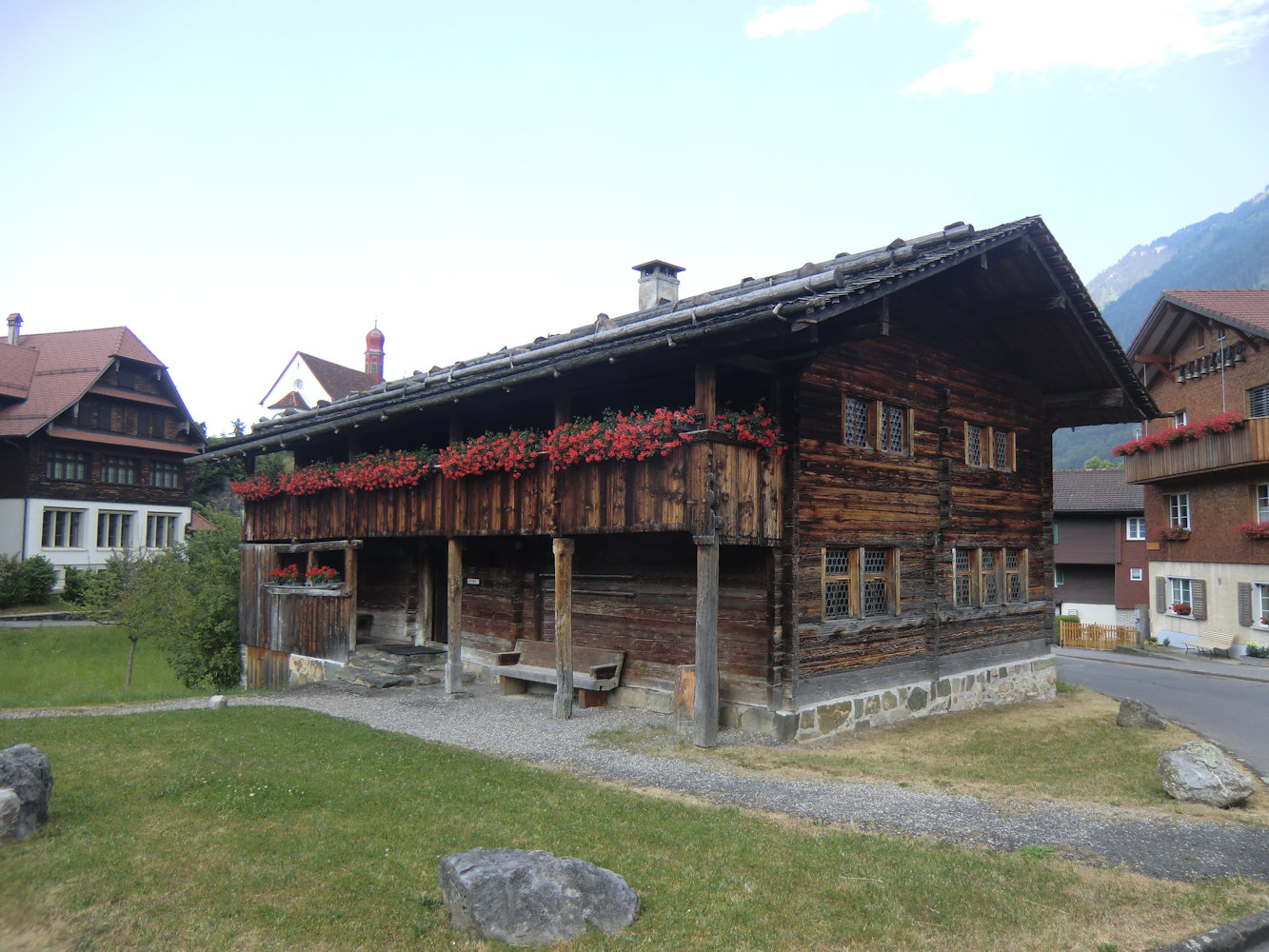
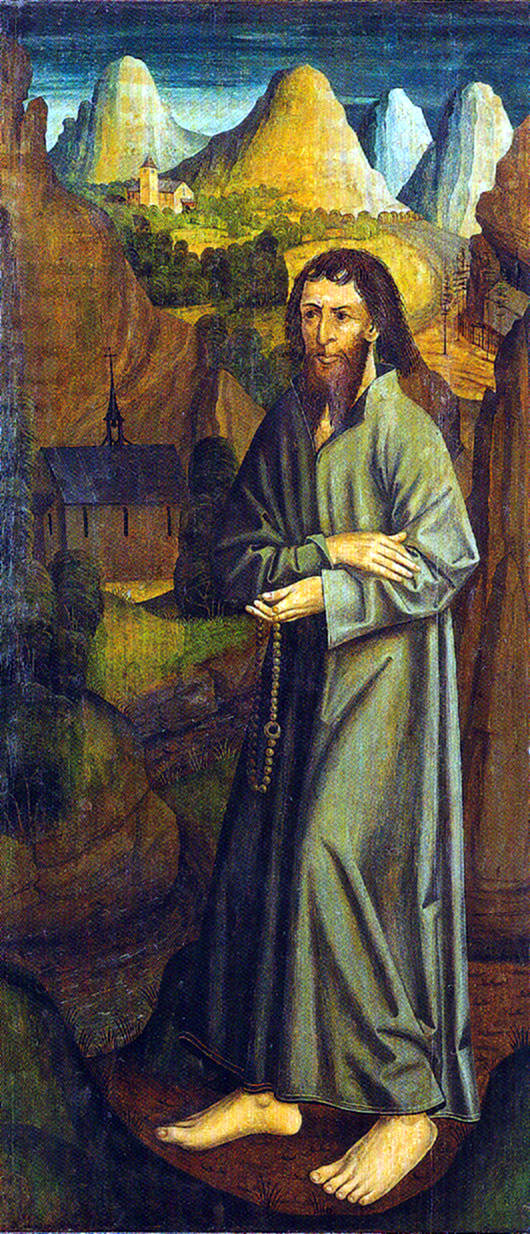
Nikolaus, son of the public domain farmer Heini and his wife Hemma, who owned 12 hectares of land and were thus rich farmers, was blessed with visions as a child. As a young man, he had a strong penchant for solitude and silent prayer. At the age of 16, he saw in a vision a tall tower at the spot in Ranft where he later built his hermitage. There are also reports of a visit from three men – similar to the visit of the three divine men to Abraham – who promised him a blessed death and gave him a cross as a sign.
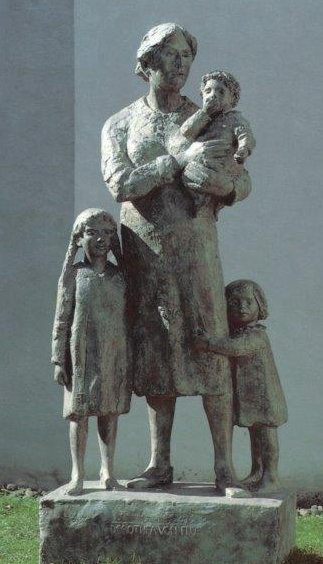
Nicholas became a farmer and from 1440 he took part as an officer in the war against Zurich, during which the massacre of Greifensee
took place, the murder of the already defeated defenders. In 1446, at the age of about 29, Nicholas married the fourteen-year-old Dorothea Wyss, then built a new house on the Flüeli and became the father of five boys and five girls. In 1457 he took legal action against the increase in church taxes demanded by the priest of Sachseln, and in 1459 he rose to the rank of councillor in Obwalden and judge of his community. He was respected for his sense of justice and his wisdom; he resisted higher political tasks. In 1460 he was again involved as a soldier in the campaign against Thurgau; according to tradition, he prevented the burning of the Katharinental monastery in Diessenhofen. Throughout all these years, however, he never lost his secret longing for the life of a hermit. When he first asked his wife for his release, she refused in horror.
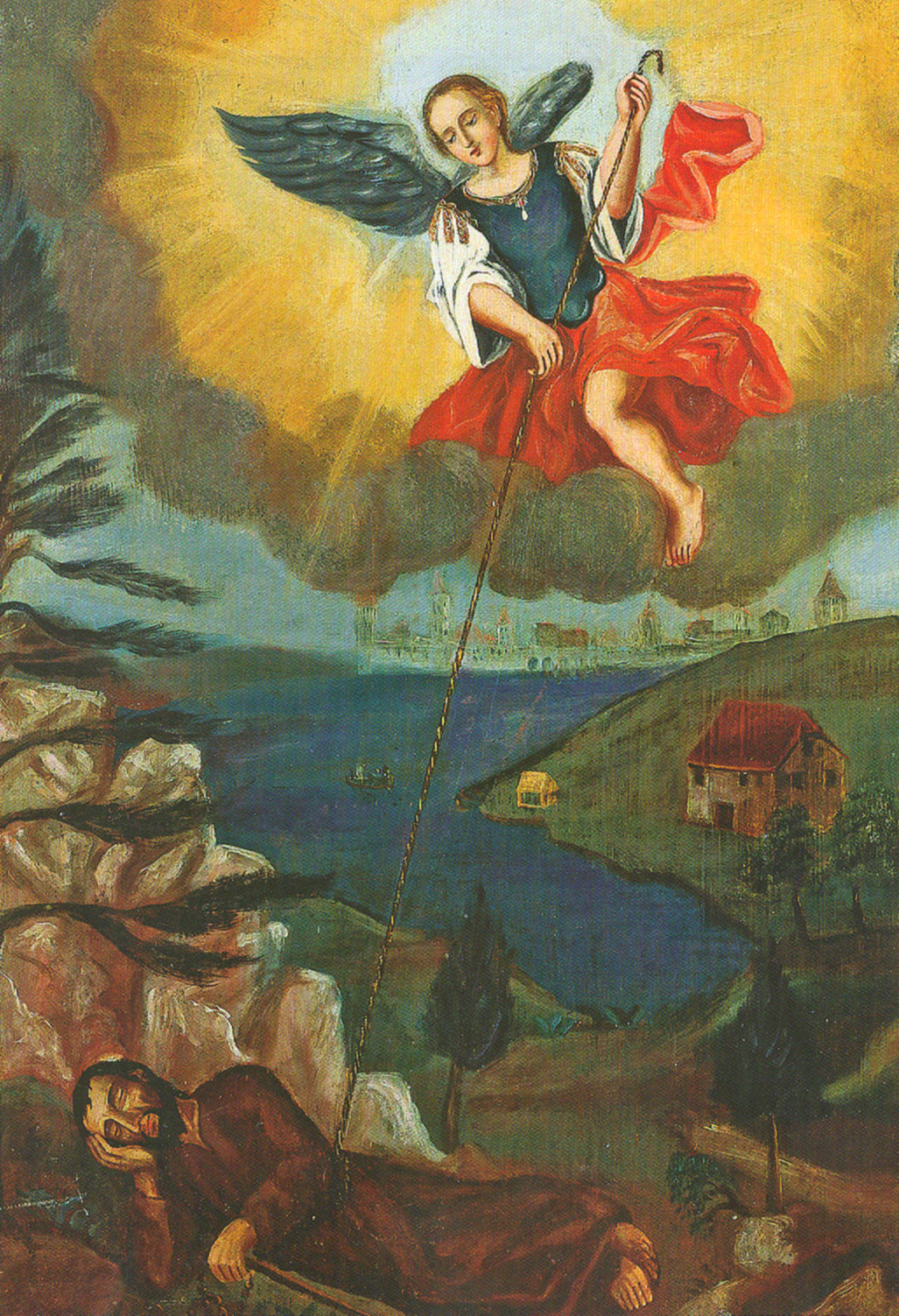 Balz Haymann: In front of Waldenburg an angel pierces Nicholas’ body with a ray of light, 1821, in the upper chapel in Flüeli-Ranft
Balz Haymann: In front of Waldenburg an angel pierces Nicholas’ body with a ray of light, 1821, in the upper chapel in Flüeli-Ranft
At the age of 50, his search for the meaning of life intensified: I was deeply depressed. My beloved wife and the company of my children became a burden to me
. He suffered from fits; sometimes he would lean against the wall with his eyes rolling back, his mouth open and a distorted expression on his face, and would no longer be responsive. On the advice of a priest, he devoted himself more to contemplating the suffering of Christ; finally, with the express consent of his wife and children, which he regarded as a great grace from God
, he decided to go abroad. On St. Gall’s Day in October 1467, Nicholas left his family – the youngest child was just one year old – and resigned from all political offices. He first made his way to a mystical brotherhood in Basel, but shortly before reaching his destination, he felt called back to Waldenburg by three visions: mystical figures blocked his way, then he saw the whole city bathed in blood red and the following night a beam of light fell on him, which gave him a stomach ache.
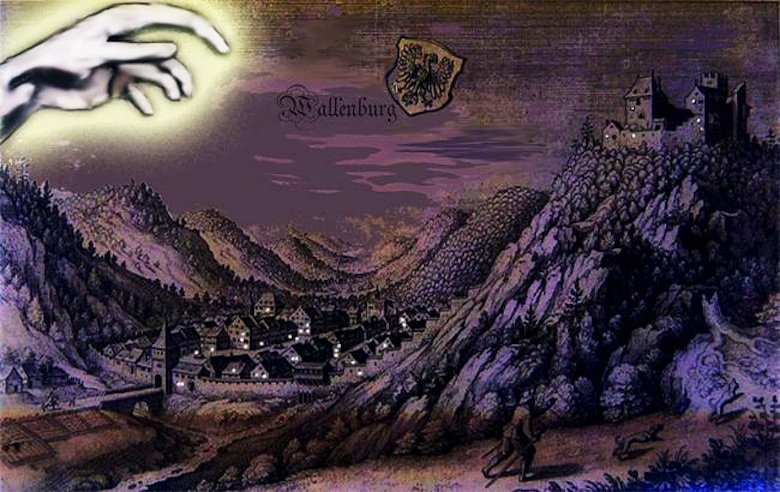
Miracle of Waldenburg
Nicholas realized that his flight to Basel was not God’s will, but he did not dare to return home and first went to the Alpe Chlisterli in the Melchtal, some distance from his hometown.
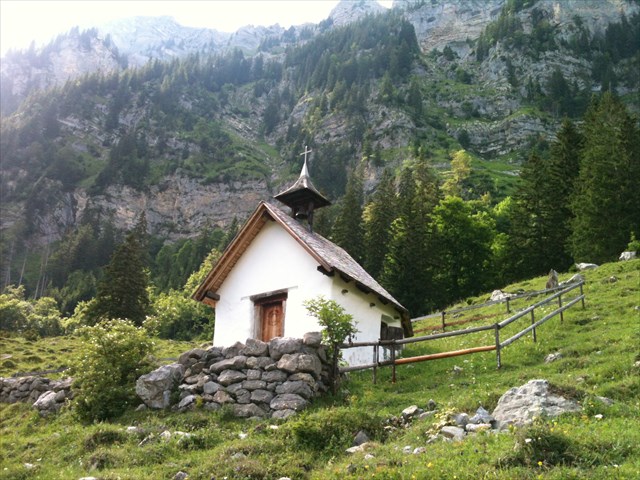
When he was found by hunters after eight days, Nicholas finally went to the place that he had seen in a vision as his hermitage since childhood: the Ranft Gorge, just a few minutes from his family home on the Flüeli. He spent his first winter there in a hut made of branches and leaves. The following summer, farmers from Flüeli built the cell and chapel for Nicholas as forced labor. In 1469, the auxiliary bishop of Constance – after examining the respectability of Nicholas’s hermit life – consecrated these in honor of the Mother of God, the penitent Mary Magdalene, the Holy Cross, and the 10,000 knights.
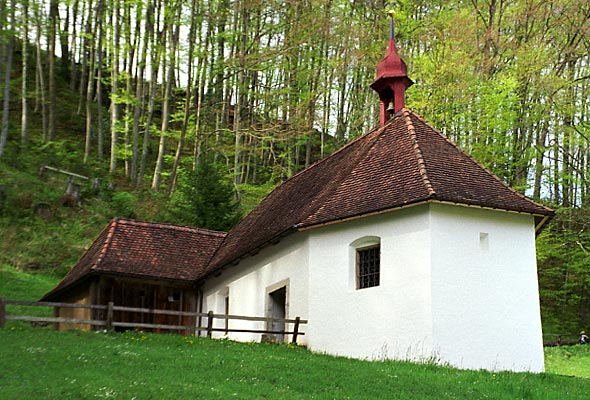
 Roland Zumbühl
Roland ZumbühlIn 1469, Ulrich, a priest from Memmingen, joined Nicholas as a student and built a wooden hermitage on the opposite side of the valley in the area of the place now called St. Niklausen, on the site of the chapel in Mösli that was built in 1448. When he too began to fast strictly and became ill as a result, Nicholas warned him to stop. Ulrich died in 1491.
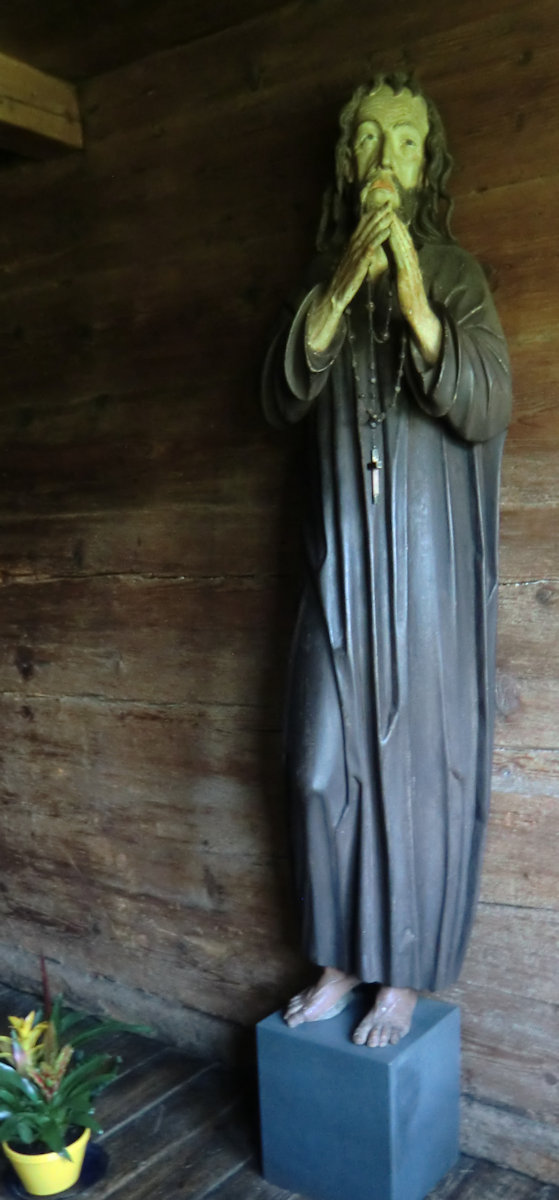
Nicholas led a strict life of prayer and penance; after experiencing the visions in Waldenburg he no longer took any food or drink, but lived exclusively on the Eucharist for almost 20 years of his hermit life, as was confirmed by an investigation ordered by the responsible bishop; however, he explained to an abbot: Good Father, I never said and I am not saying that I don’t eat anything
; in any case, he was so emaciated that he was unable to work. He slept on a board and used a stone as a pillow. Contemporaries described him as sociable, communicative, comfortable, cheerful, and, above all, friendly
. It is said that he resisted the temptation of the devil, who threw him into a thorn bush. When asked what he considered to be God’s greatest gift to mankind, he replied: reason
.
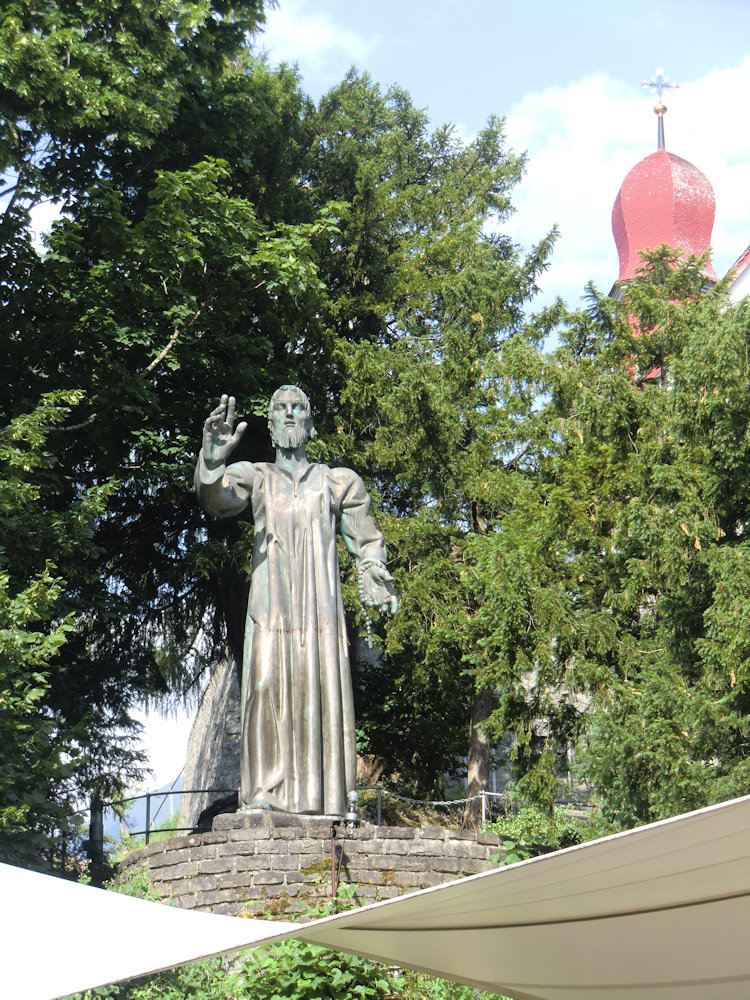
People came from far and wide to seek advice from Brother Klaus
, as he now called himself. He was considered one of the greatest advisors and pastors, also for domestic and foreign politicians, and was revered by the people as a living saint. In 1473, Archduke Sigmund of Austria sent his linen doctor to Nicholas and gave him rich gifts. In 1481, for the
Diet
in Stans, he brokered peace between the Confederates, who had become divided after their surprise victory over Burgundy and were now threatening to go to war among themselves, using a message delivered by the priest. In this way, he saved the Confederacy, which at that time consisted of eight cantons. The treaty that was then concluded formed the basis of the Confederacy for more than three centuries; this is why Nicholas is considered the peacemaker and savior of Switzerland
.
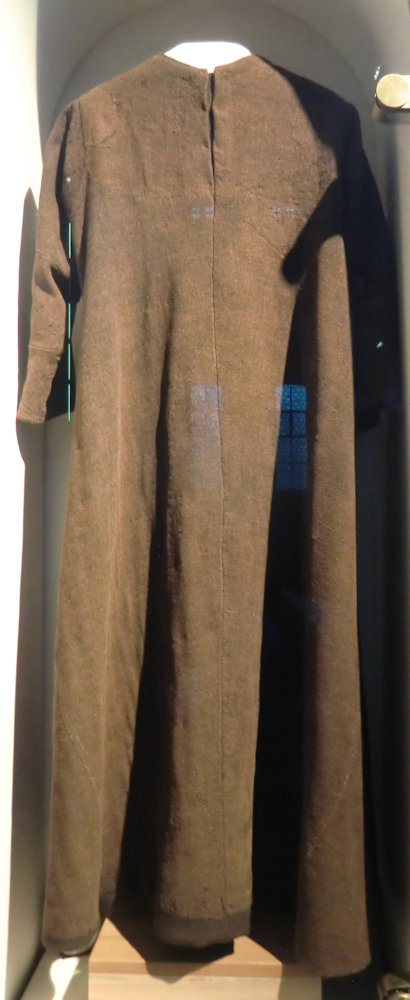
Heimo Amgrund, the pastor of Stans, reported in the Sachsler church register:
Brother Klaus had told him that in his mother’s womb before he was born, he had seen a star in the sky that shone through the whole world. Since he had lived in Ranft, he had always seen a star in the sky that was like him, so he thought it was him. This meant that everyone in the world knew that he also shone in the world like that.
Brother Klaus had also told him that he had seen a large stone that signified the steadfastness and firmness of his being, in which he should persevere and not abandon his plan.
He had also seen the holy oil.
In 1482, Nicholas used gifts from the Swiss Confederates and the pilgrims to establish a chaplaincy for his chapel, which was then transferred to the new chapel of St. Barromäus on the Flüeli in 1619. In the church register of Sachseln, Nicholas was described in 1488 as decent, kind, pious, and sincere
.

Nicholas died after eight days of convulsive suffering, in the presence of his wife. The next day, a messenger met her at the grave, describing a vision of Nicholas standing in radiance on the rock now occupied by the Chapel of St. Borromeo. His death sparked widespread mourning: Vienna’s St. Stephen’s Cathedral was draped in black, with a requiem mass attended by a hundred priests.
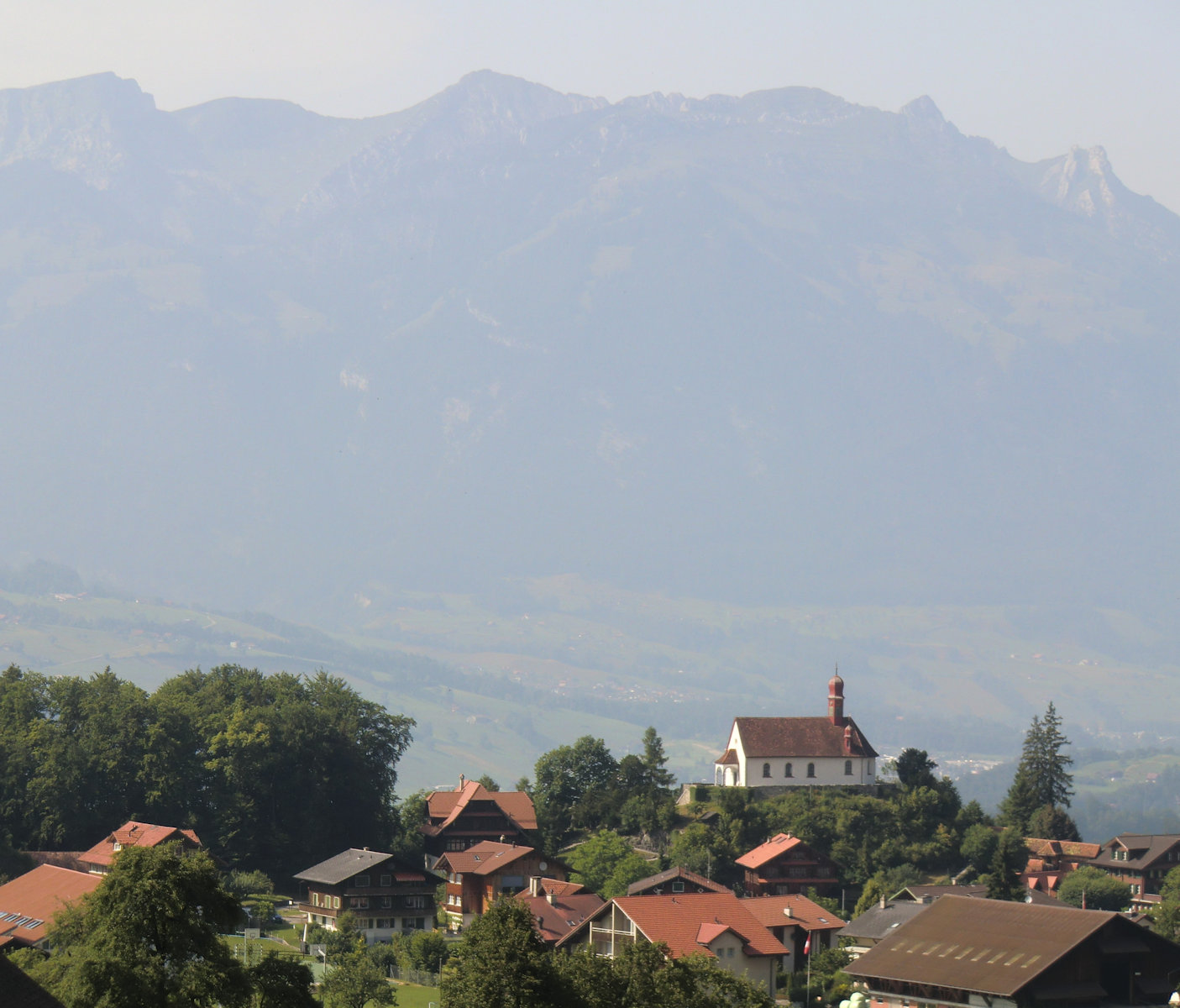
on the Fluo, ie
on the rock
Nicholas’ austere lifestyle initially sparked curiosity and suspicion among his contemporaries, but he eventually earned their fascination and trust and was revered as a living saint, a peacemaker, and the father of the homeland.
Nicholas was one of the last great mystics of the Middle Ages. His meditations and prayers focused on the suffering of Jesus, the Eucharist, and the Trinity. His meditation picture showed Christ with the crown of thorns in the middle and from this six spokes and six medallions with scenes from the biblical history of salvation. It soon became widely known as a wheel picture.
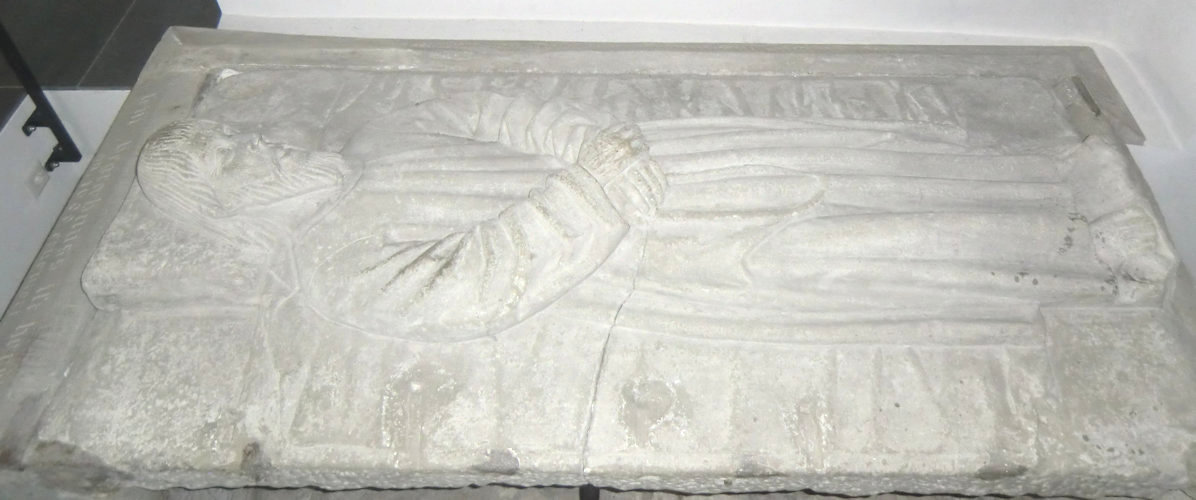
The gravesite of Brother Klaus, located next to the parish church in Sachseln and near his hermitage chapel in the Ranft Gorge, became one of Switzerland’s most significant pilgrimage sites. To accommodate the influx of pilgrims, a lower chapel was constructed in 1501 near the original upper chapel. The same year, the canton of Obwalden commissioned the first biography of Nicholas. Initially dedicated to Theodor von Sitten, the church at Nicholas’ grave site was rebuilt and expanded in 1459. Following his beatification in 1672, another new building was constructed. A chapel dedicated to Charles Borromeo, who visited in 1570, was built in Nicholas’ hometown of Flüeli between 1614 and 1618.
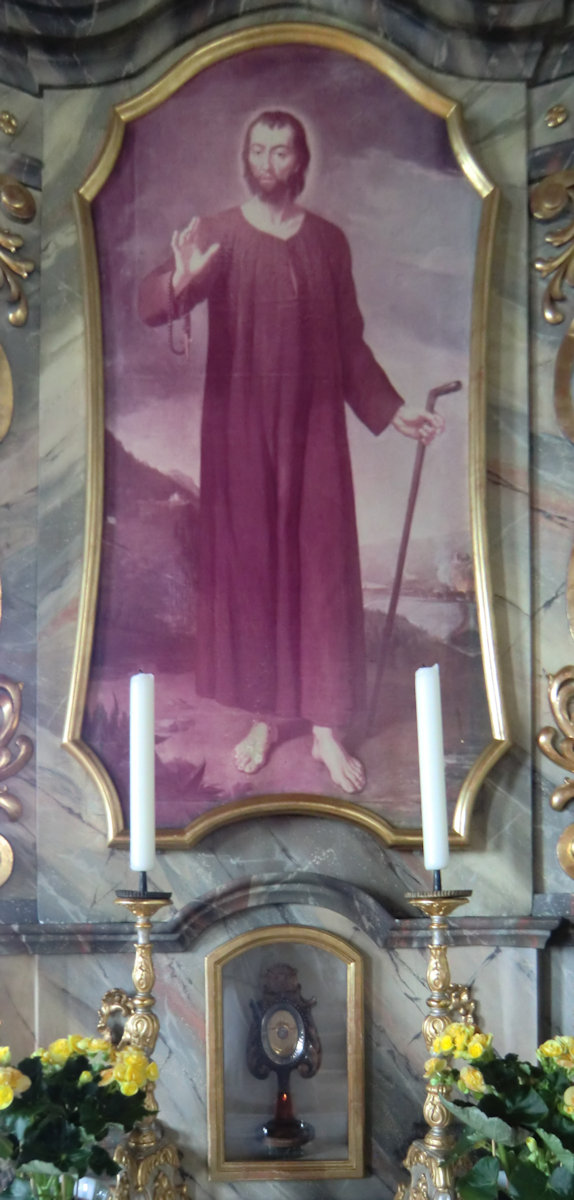
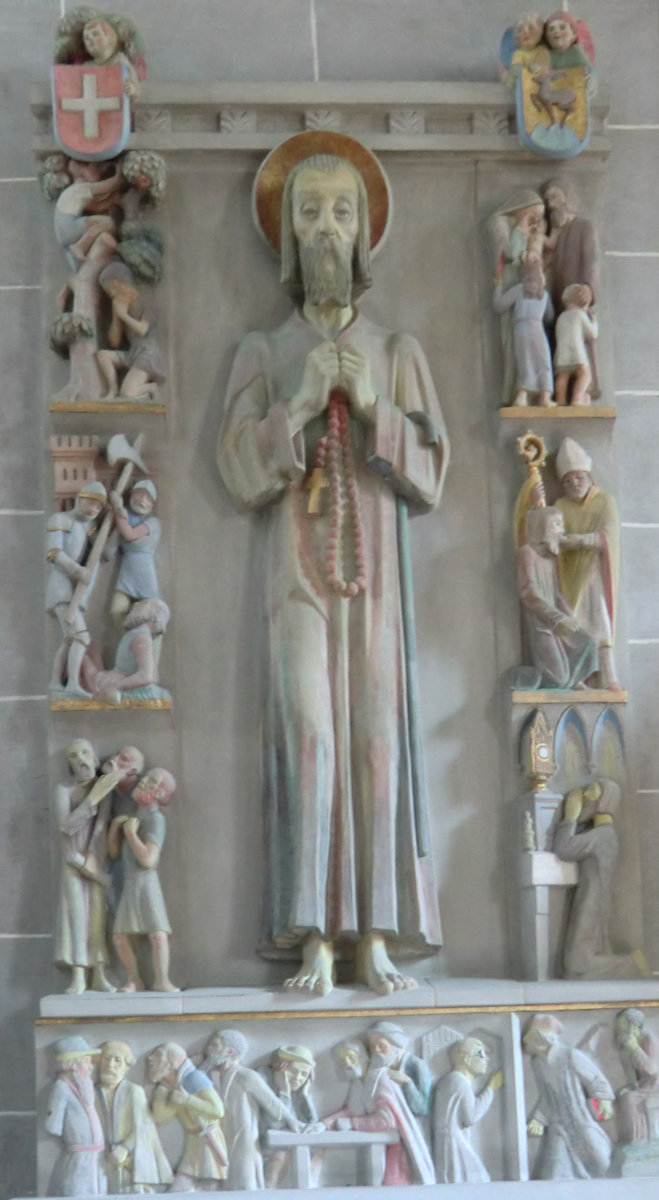
Nicholas’ birthplace in Flüeli is considered to be the oldest house in Switzerland, with parts dating back to the 14th century and the substance dating back to 1460; it was enlarged and rebuilt several times, and finally restored in 1925 using old materials; in 1944/45 the family home he had built was also renovated; in 1947, on the occasion of his canonization, a celebration area was set up beneath the Borromeo Chapel. In 1868, a monastery for poor maids was founded in the main town of Melchtal according to the Benedictine rule, whose patron was Brother Klaus. Nicholas is the only traditional saint born in Switzerland.
When Switzerland feared an attack by Nazi Germany, another miracle occurred in Waldenburg
on May 13, 1940: a large, brightly shining hand appeared in the sky above the town – the protective hand of the country’s patron saint, Brother Klaus; Switzerland was spared from the war.
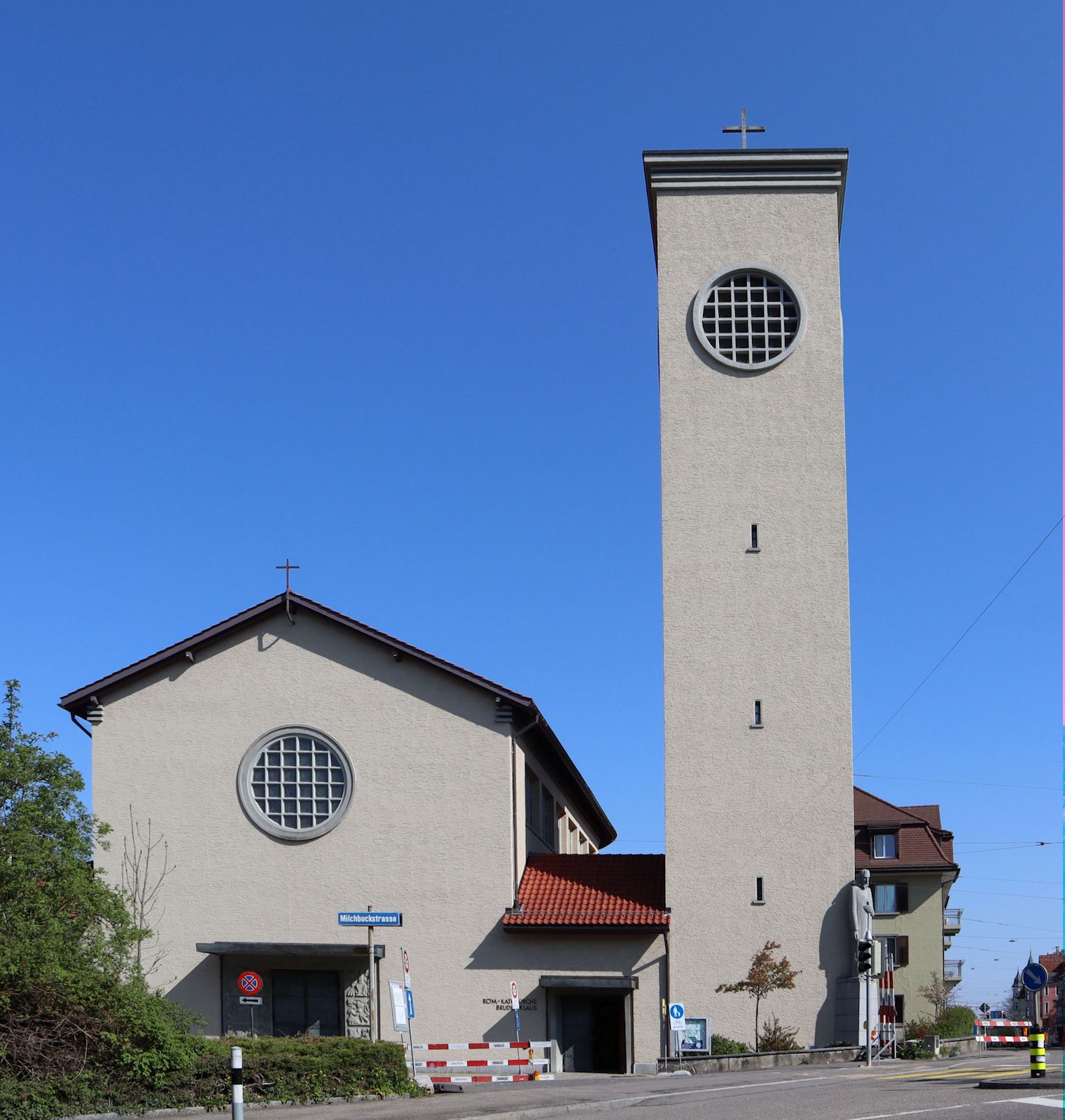
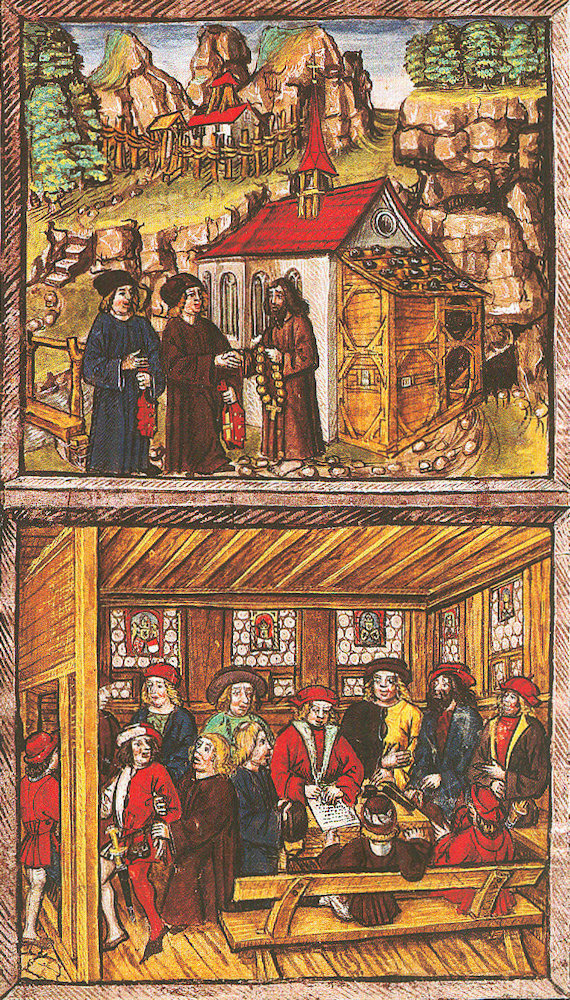
Lucerne Chronicleof 1507/13

 Canonization:
Canonization:  Attributes: as a hermit, stick, and rosary,
Attributes: as a hermit, stick, and rosary, patron saint of Switzerland and the canton of
patron saint of Switzerland and the canton of